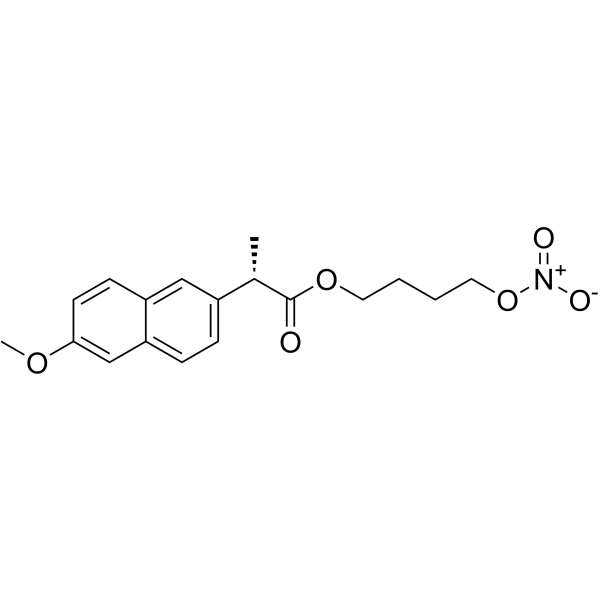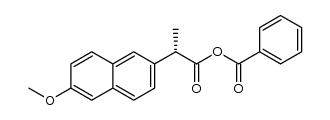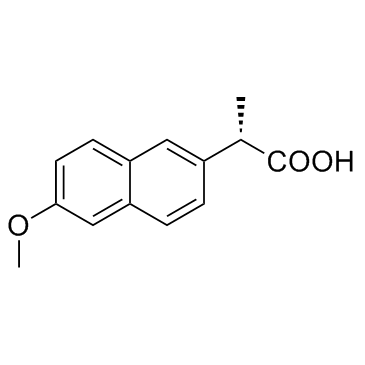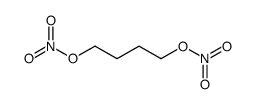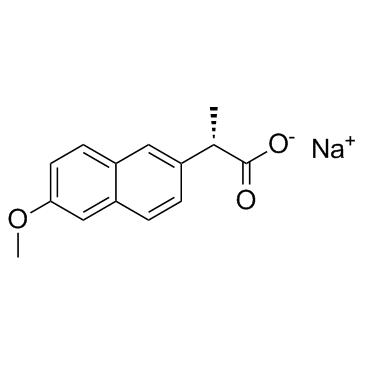163133-43-5
| Name | naproxcinod |
|---|---|
| Synonyms |
Naproxcinod
2-(S)-(6-methoxy-2-naphthyl)-propanoic acid 4-nitroxybutyl ester HCT-3012 2-(S)-(6-methoxy-2-naphthyl)-propanoic acid nitrooxybutyl ester 4-nitrooxybutyl (2S)-2-(6-methoxynaphthalen-2-yl)propanoate Nitronaproxen 2-(S)-(6-methoxy-2-naphthyl)propanoic acid 4-(nitrooxy)butyl ester AZD-3582 (S)-2-(6-methoxy-2-naphthyl)propionic acid 4-nitrooxybutyl ester naproxen-n-butyl nitrate |
| Description | Naproxcinod (Nitronaproxen) is the first in class of cyclooxygenase (COX)-inhibiting nitric oxide donators (CINODs). Naproxcinod shows analgesic and anti-inflammatory effects, it can be used for the research of osteoarthritis and inflammation[1][2][3]. |
|---|---|
| Related Catalog | |
| In Vitro | Naproxcinod (1-30 μM; 15 min) concentration-dependently increases cGMP level up to 27-fold over basal level[1]. Naproxcinod (1-100 μM; 8 h) concentration-dependently increases HO-1 mRNA in endothelial cells[2]. Western Blot Analysis[2] Cell Line: Endothelial and gastric mucosal cell lines Concentration: 30-1000 μM Incubation Time: 8 and 24 hours Result: Increased HO-1 protein levels in endothelial and gastric mucosal cells and increased HO-1mRNA levels in endothelial cells. |
| In Vivo | Naproxcinod (0-41 mg/kg; p.o. once daily for 42 weeks) shows a significantly higher mean BW (7.3%) than vehicle group and improves skeletal and cardiac disease phenotype in the mouse model of DMD[3]. Animal Model: C57BL/10 mice with Duchenne muscular dystrophy (DMD)[3] Dosage: 0, 10, 21 and 41 mg/kg Administration: Oral gavage; 0-41 mg/kg once daily for 42 weeks Result: Significantly improved fraction shortening and ejection fraction, and reduced inflammation in vivo. |
| References |
| Density | 1.213 |
|---|---|
| Boiling Point | 489.475ºC at 760 mmHg |
| Molecular Formula | C18H21NO6 |
| Molecular Weight | 347.36200 |
| Flash Point | 193.208ºC |
| Exact Mass | 347.13700 |
| PSA | 90.58000 |
| LogP | 4.00680 |
| Precursor 9 | |
|---|---|
| DownStream 0 | |
